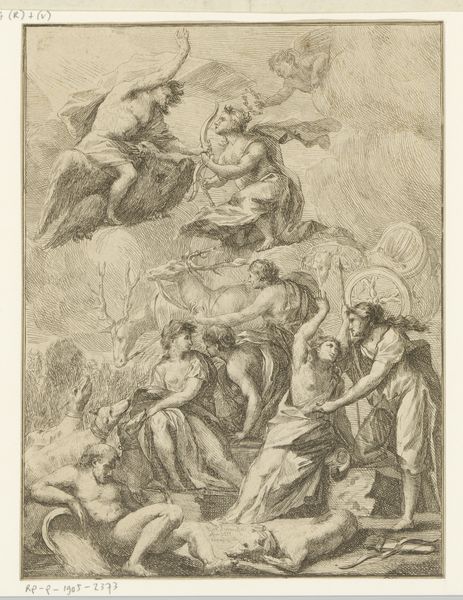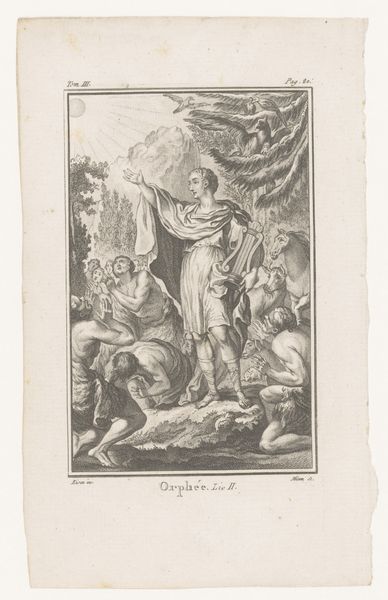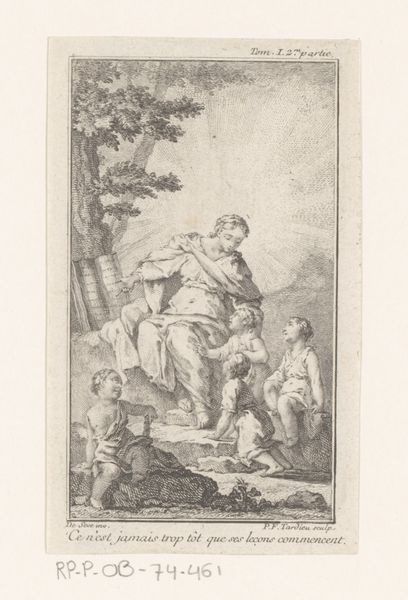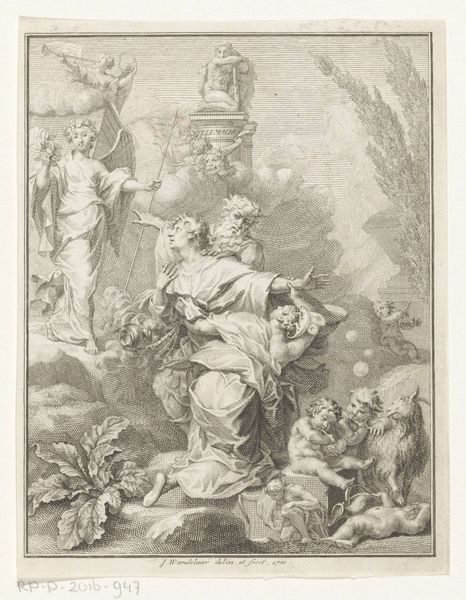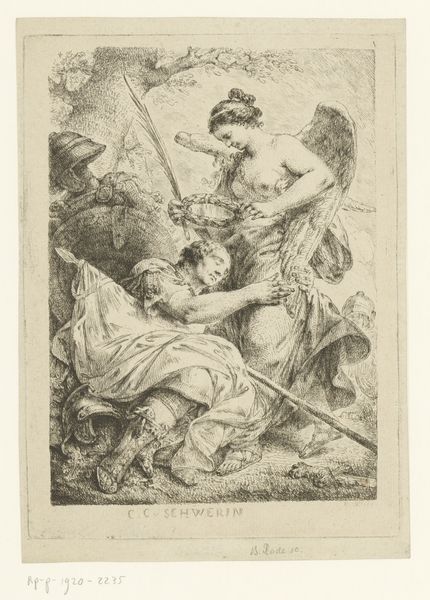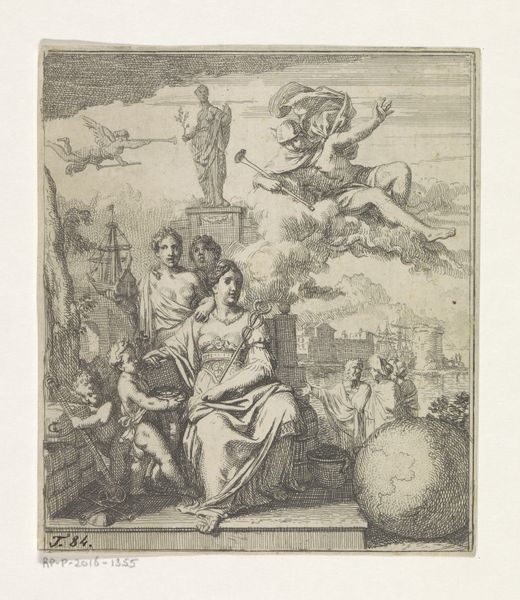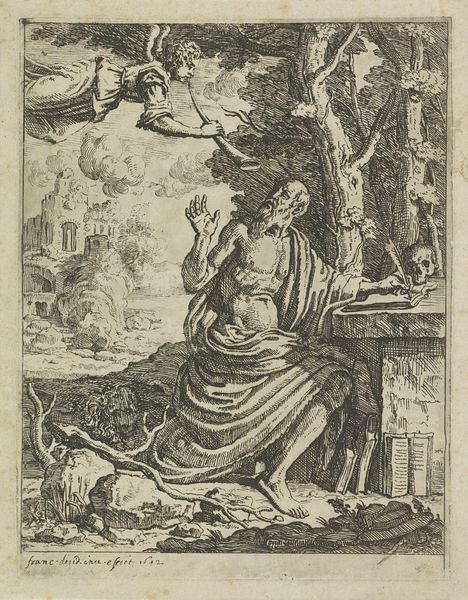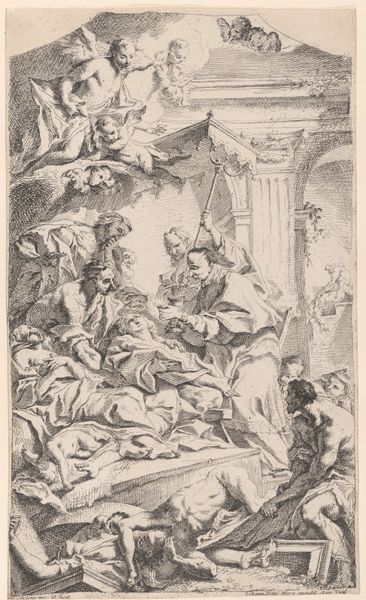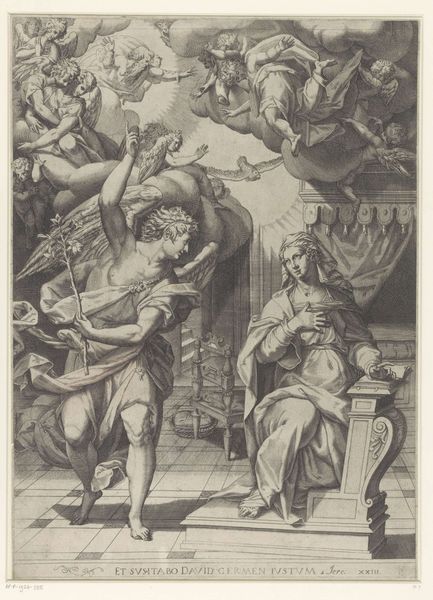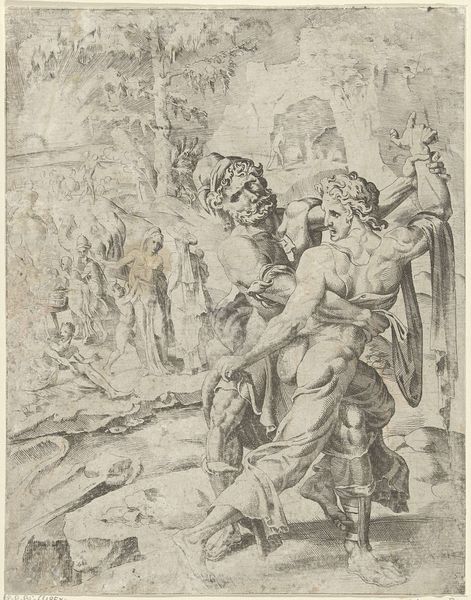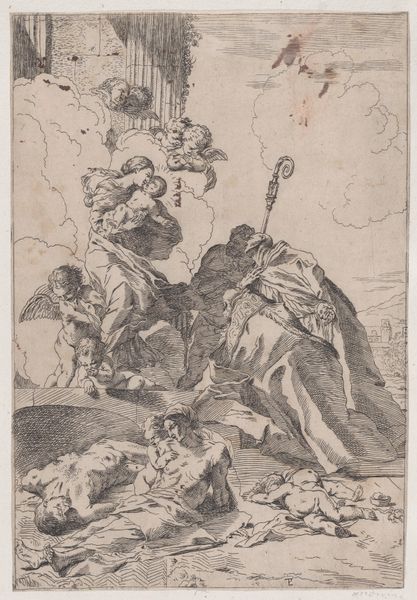
print, etching
#
baroque
# print
#
etching
#
figuration
#
history-painting
Dimensions: height 157 mm, width 110 mm
Copyright: Rijks Museum: Open Domain
Editor: We’re looking at Cornelis Schut’s etching, “Annunciation,” dating sometime between 1607 and 1655. The line work is incredible! It's a scene filled with such dynamic energy, all in black and white. What aspects of its construction stand out to you? Curator: The artist's strategic deployment of line and shade is what defines the representational architecture of this piece. Observe how the varying densities of the hatching create volume, dictating how light falls and thus sculpting the figures within the composition. Editor: So, it's the strategic use of light and dark that gives the figures such weight? Curator: Precisely. But beyond the figures, regard the abstract structure that contains the narrative—the placement of the figures, the relationships and rhythm made by lines and light; how would you characterise this structure? Editor: I see that Mary's gaze aligns almost with the Angel's direction, which connects them in an almost circular direction of sight? Is this what makes the piece Baroque, it feels as though there is movement being forced by composition? Curator: It’s this emphasis on directional movement that defines much of Baroque sensibility. Cornelis Schut directs our eye through this ethereal announcement. It is about both visual tension and a visual resolution. Editor: This close analysis has made me appreciate the print in a new way; the image itself tells more than I expected, without further context. Curator: By recognizing the intrinsic qualities present within this piece, we unlock the structure inherent to the visual arts.
Comments
No comments
Be the first to comment and join the conversation on the ultimate creative platform.

